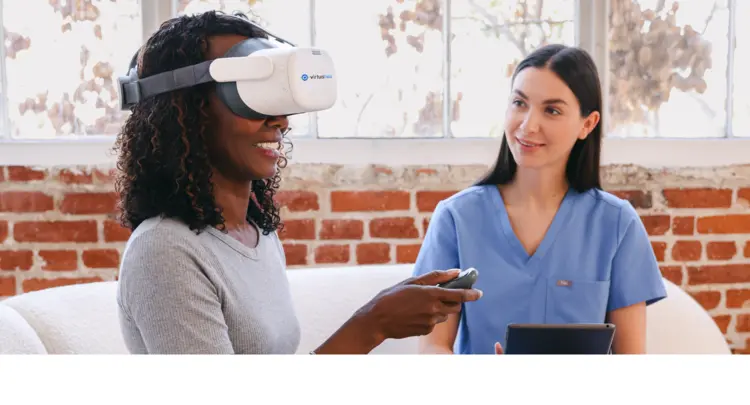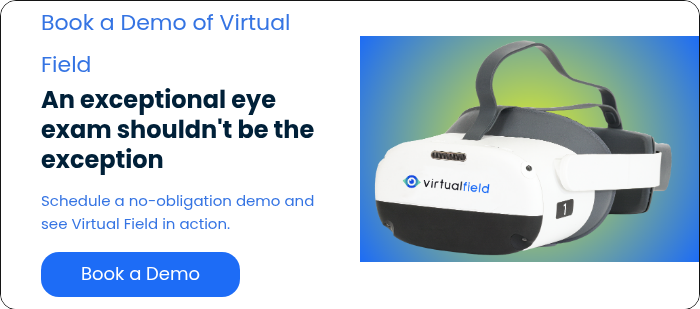Visual field testing is central to glaucoma care, neuro-ophthalmology, and many retinal disorders. The 24-2 remains a critical, foundational visual field exam for routine screening, while the enhanced 24-2C, with its 10 extra paracentral points, catches subtle scotomas early. This guide offers six actionable tips for doctors and technicians to maximize the diagnostic insights possible from your 24-2 and 24-2C testing. Below, each tip is expanded with step-by-step guidance, real-world examples, data benchmarks, troubleshooting, and links to authoritative sources so you can truly master both exams.
Understanding 24-2 and 24-2C Visual Field Tests
What is a 24-2 Visual Field Test?
The 24-2 visual field test is a standard assessment used to evaluate the central 24 degrees of vision, focusing on detecting visual field defects that may indicate glaucoma or neuro-ophthalmic conditions. It tests 54 points spaced 6 degrees apart, but may miss subtle defects in your paracentral vision due to lower point density.
What is a 24-2C Visual Field Test?
The 24-2C is an enhanced version of the 24-2 test. It includes 10 additional central points within the 10-degree area of fixation to improve detection of scotomas in paracentral vision, a region crucial for early glaucoma diagnosis. These added points make the 24-2C ideal when your field of vision is at risk from central or near-central vision loss.
What Does “24-2” Mean in a Visual Field Test?
In a 24-2 visual field test, “24” refers to testing the central 24 degrees of vision, and “2” indicates that test points are spaced every 6 degrees from fixation. This pattern balances speed and diagnostic coverage, making it the standard exam for glaucoma and neuro-ophthalmic screening.
Clinical Relevance of 24-2 vs. 24-2C Testing
Clinical Relevance
Both exams are indispensable for diagnosing glaucoma, monitoring its progression, and identifying neurological conditions. The 24-2C, in particular, enhances sensitivity in paracentral vision, an area often affected first in glaucoma. Recognizing changes in your field of vision in these regions helps eye care professionals initiate timely treatments.
Technical Details of 24-2 and 24-2C Perimetry
These exams use automated perimetry, presenting light stimuli to various points in your field of vision. While the 24-2 is the workhorse for routine monitoring, the 24-2C is preferred when detailed evaluation of paracentral vision is required. Subtle defects in these areas can signal the early stages of diseases that may not be visible on traditional imaging.
Learn more about the 24-2, 24-2C, and 20 other visual field and vision tests by downloading our comprehensive testing guide.
Applications and Use Cases
Glaucoma Management
The 24-2 and 24-2C exams are foundational tools for identifying early signs of glaucomatous damage, especially in your paracentral vision, where visual loss often begins.
Neurological Assessments
These exams help detect patterns in your field of vision that may indicate lesions in the brain or optic pathways.
Research Uses
Both 24-2 and 24-2C visual field exams are used in clinical research focused on vision loss, especially within the central and paracentral vision zones.
Fun Fact: The 24-2 is the most frequently used visual field test on the Virtual Field platform, with one test conducted every 12 seconds globally.
Practical Tips for Practitioners
1. Prepare and Calibrate for Reliable Results
Good data starts with a reliable setup. Before running any visual field exam, you must ensure proper device calibration and a testing environment. Skipping these steps can introduce artifacts that mimic disease or mask actual defects.
Optimal 24-2 Visual Field Exam Step-by-Step Setup
1. Calibration Check. If using a traditional bowl or flat-panel perimeter, you will need to calibrate your device, as it likely relies on an external photometer that necessitates manual luminance checks to stay within specifications. Verify your stimulus luminance is within ±1% of ANSI standards (31 cd/m² background, 10 cd/m² target).
Note: If you're using a virtual reality visual field analyzer, you won't need to take this calibration step.
2. Room Conditions
If using a traditional bowl or flat-panel perimeter, maintain ambient light at a level of ≤1 lux. Remove glare sources by closing blinds and turning off fluorescent fixtures.
Note: If you're using a virtual reality visual field analyzer, you won't need to worry about controlling the ambient lighting in the patient's testing room.
3. Head Positioning
If using a traditional bowl or flat-panel perimeter, you will need to center the patient’s head with their chin on the chinrest. Confirm alignment by asking the patient to fixate on the central target; adjust until they report no drift. Note that if your patient suffers from chronic head, neck, or shoulder pain, holding their position for the length of the exam may be a challenge and require continual encouragement from your technician to stay focused and maintain their position.
Note: If you're using a virtual reality visual field analyzer, you won't need to worry about asking your patients to hold a steady positioning, leaning forward into a bowl perimeter. The Virtual Field visual field analyzer automatically provides patients with auditory encouragement in their preferred language to keep them focused on the test as needed.
Read this case study about the Georgia Center for Sight to learn how the clinic's technicians are able to test and supervise multiple patients simultaneously with Virtual Field.
2. Choose Between 24-2 vs. 24-2C
Not every patient needs the same grid. Picking the optimal test pattern for each patient hinges on the clinical question: routine follow-up or detailed paracentral assessment?
Consider these factors when deciding when those extra central points of 24-2C are needed for a patient's exam:
Central point density
- 24-2 (54 points): Tests one point every 6° over the central 24° of vision.
- 24-2C (64 points): Adds ten extra test points within the central ±10° to boost detection of small, paracentral scotomas.
Mean Deviation (MD) precision
- 24-2: MD measurements vary by about ±1.5 dB (standard deviation).
- 24-2C: The tighter sampling around fixation improves MD precision to about ±1.2 dB.
Paracentral-scotoma detection sensitivity*
- 24-2: Detects roughly 68% of minor central defects.
- 24-2C: With the extra points, sensitivity jumps to about 85% for those paracentral zones.
*Early paracentral defect detection in glaucoma
TL; DR; When to use 24-2C:
- Baseline glaucoma suspects with central field risk
- Plaquenil toxicity screening in patients ≥5 years on hydroxychloroquine
- Neuro-ophth evaluations for central/paracentral lesions
3. Optimize Patient Instruction and Comfort
Patient cooperation is crucial to the success of a visual field test. A clear, calm patient delivers reliable responses, which is crucial when you’re searching for subtle paracentral defects. Spend two minutes prepping each patient, and you’ll save ten in retests.
Pre-test Briefing:
- Ensure your patient knows what to expect from the test. Your technician may advise, “You’ll see brief flashes. Press the button every time you observe even a tiny flash.” Virtual Field will reinforce these instructions with an auditory message spoken in the patient's preferred language.
- For patients who are particularly anxious, new to visual field testing, or neurodivergent and require additional preparation and coaching, consider a practice run. Your technician can show three demo stimuli at mid-periphery to confirm the patient's understanding before beginning the test.
Reduce Anxiety and Fatigue:
- Schedule visual fields at the start of the visit, especially if you are using a traditional tabletop perimeter, which is more likely to cause anxiety and physical fatigue than a visual reality visual field analyzer.
4. Monitor and Troubleshoot Reliability Indices
Reliability indices are your early warning system. They tell you when to pause and troubleshoot a patient's exam. Use these thresholds as your “go/no-go” checks. Whenever any one of them falls outside its acceptable range, troubleshoot immediately rather than forging ahead with suspect results.
- Fixation losses: Aim for 20% or less. If using a traditional tabletop perimeter that doesn't automatically provide corrective encouragements to the patient, and fixation losses exceed 20%, pause the test and remind the patient to maintain fixation on the central target. You may also need to consider taping the patient's eyelids for some exams to minimize blinking or drift.
- False positives: Keep these at 15% or below. When you encounter more than 15% false positives, often due to “trigger-happy” responses, stop the exam, remind the patient that guessing only yields insufficient data, and then resume once they understand.
- False negatives: These should also stay under 15%. If they exceed 15%, it often means the patient missed stimuli.
5. Leverage EHR Integration and Progression Analysis
Data is only insightful if you can track it over time. Automating imports from your visual field device directly into your electronic health record (EHR) system saves chart prep and supports your progression analysis efforts. After two exams, watch for VFI declines to catch progression early.
6. Communicate Findings with Impact
A test isn’t complete until the patient understands it. Translating grids into patient-friendly explanations or treatment plans empowers them to partner with you as their healthcare provider in making informed decisions. Use visuals, analogies, and a short takeaway checklist they can reference.
Translating Results:
- Show total and pattern deviation maps side-by-side.
- Explain: “This dark area here means we’re losing sensitivity near the center—early glaucoma often starts here.”
For more on communicating visual field results with patients, refer to these best practices.
Conclusion
Mastering the 24-2 and 24-2C visual field exams is essential for detecting early visual field changes in paracentral vision, where glaucoma and neuro-ophthalmic conditions often begin. With optimized exam administration, patient education, and methodical interpretation, eye care professionals can ensure precise diagnosis, effective treatment planning, and improved patient outcomes.
See How Virtual Field Simplifies 24-2 and 24-2C Testing
Virtual Field conducts 24-2 and 24-2C exams faster than traditional tabletop perimeters while maintaining clinical accuracy. Practices use Virtual Field to reduce patient fatigue, improve technician efficiency, and expand access to reliable visual field testing.
About Virtual Field
Virtual Field delivers an exceptional eye exam experience. Eye care professionals including ophthalmologists and optometrists examine patients faster, more efficiently, and more comfortably than ever before. Exams include Visual Field, 24-2, Kinetic Visual Field (Goldmann Perimetry), Ptosis, Esterman, Color Vision, Pupillometry, Extraocular Motility (EOM), and more.




